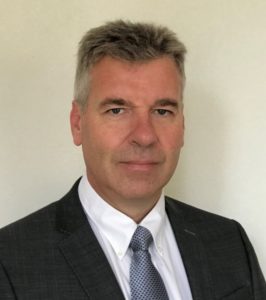General Manager outlines three essential features for smart energy to provide value to end-users

Edwin Meijer, General Manager, Smart Energy, Honeywell EMEA
Dubai, UAE, 30 October 2018: “It’s nice to have smart meters, but what will you do with the data?” asked Edwin Meijer, General Manager, Smart Energy, Honeywell EMEA. Meijer stressed that communication is the second, and equally important, layer that will allow stakeholders to gain value from the smart meters, as connecting to a central infrastructure database allows them to not only collect, but also to store and validate the data. The third layer, Meijer explained is to have the right applications on top of the database to provide intelligent warnings throughout the application. This, Meijer stressed, serves as the three fundamental features of smart energy.
Meijer stressed that while good products are necessary, the true value lies in its application of these solutions. Honeywell, Meijer said, being a connected enterprise with its hand in various sectors, leverages knowledge and best practices from other business units to supply not only meters and infrastructure but also knowledge and information to help Dubai, and other cities, achieve goals related to energy efficiency.
Meijer said that, as part of Honeywell’s participation in WETEX, the company is demonstrating its smart energy application for utilities. “The application is based on pattern recognition allowing operators to identify abnormal energy consumption,” he says. “It creates reports to alert operators to what is going on, so they can implement the necessary solution and correct the issue. Instead of just analysing the data, we have an application that proactively warns you to respond.” The value to predictive maintenance, Meijer said, should not be underestimated as, globally, utilities lose USD 96 billion per year, due to non-technical losses.
Meijer said that meters vary in application for residential, commercial and industry requirements, such as in District Cooling. He added that with every region, country, case and utility having a unique set of requirements, it is difficult to quantify the exact payback of investment in particular meters. “What we can say is that not every meter is the same,” Meijer said, “and the level of investment will depend on the priority – whether it is the capex or Total Cost of Ownership – by investing in the correct infrastructure to drive down consumption.” Being more open to benefits, he said, is better as the data and information will enable faster payback. “Of course, you always have to strike a balance,” he said. “You can have a meter for USD 10 or you can have one for USD 100. Every project is unique and you have to analyse the feasibility, what to do with the data and the payback. We focus on the [long-term] benefits. I’m happy to see that companies like DEWA like to go further for the environment. Honeywell also likes to go further.” To underscore the strong relationship between DEWA and Honeywell, Meijer said that Honeywell was appointed by DEWA to supply and install 270,000 smart meters as part of Phase Three of DEWA’s ‘Smart Applications via Smart Grid and Meters’ initiative, bringing the total number of Honeywell’s installed meters in Dubai up to 700,000 and making the company the largest supplier of meters under this initiative.
Hannah Jo Uy is Assistant Editor at Climate Control Middle East magazine. She may be contacted at hannah@cpi-industry.com
Copyright © 2006-2025 - CPI Industry. All rights reserved.